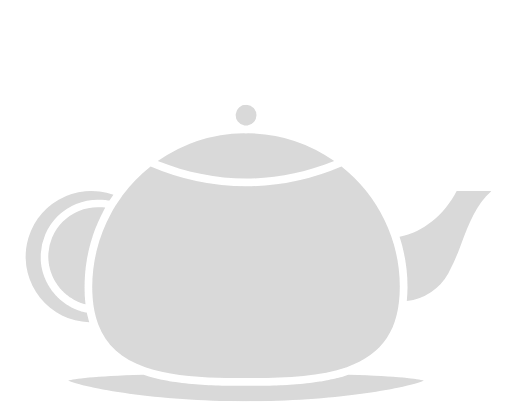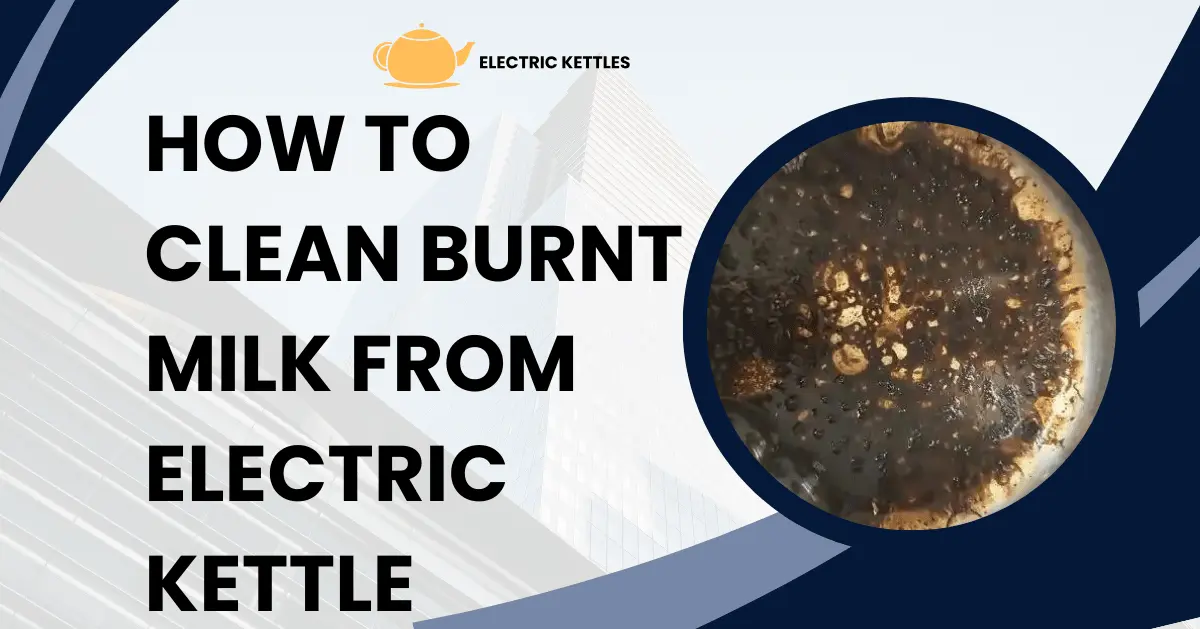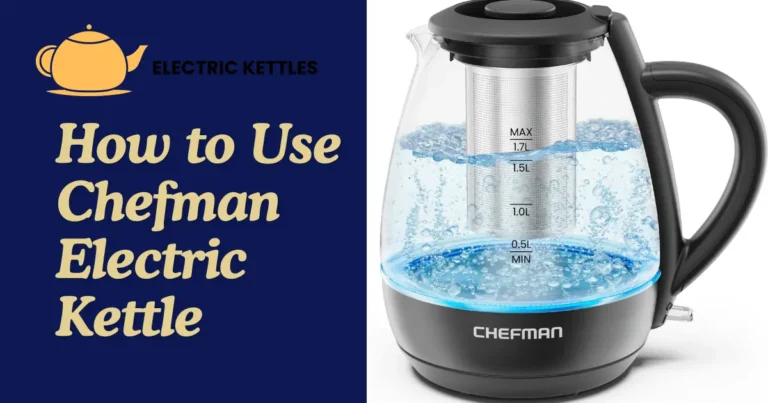How to Clean Burnt Milk From Electric Kettle
Burnt milk in electric kettles can be a common issue. It happens when milk is heated too long or at too high a temperature. The burnt residue can affect the kettle’s performance. It can also change the taste of future drinks. If left uncleaned, burnt milk can harden and become harder to remove. This can lead to more cleaning troubles later on.
Cleaning burnt milk promptly is essential for several reasons. First, it helps maintain the kettle’s functionality. A clean kettle heats water evenly and works more efficiently. Second, it ensures that your drinks taste fresh and pleasant. Residue from burnt milk can leave a bad flavor in your beverages. Regular cleaning also prevents damage to the kettle’s interior.
Table of Contents
Causes of Burnt Milk
- High Heat Settings: Using the highest temperature setting can cause milk to heat too quickly, leading to scorching and burning. Electric kettles often have various temperature options, but selecting a high setting for milk can create hot spots, causing the milk to burn rapidly.
- Prolonged Heating: Leaving milk in the kettle for too long can result in evaporation and the milk sticking to the kettle’s bottom, leading to burnt residue. If milk is heated without attention, it can thicken and form a crust that becomes difficult to clean.
- Lack of Stirring: Not stirring the milk while heating can cause uneven heating. The areas in contact with the kettle’s surface can burn, while the rest remains cool. Stirring helps distribute heat evenly and prevents the bottom layer from scorching.
- Using Low-Quality Milk: Some milk brands may have additives, such as stabilizers or thickeners, that can scorch more easily when heated. These additives can create a film that sticks to the kettle, leading to burnt milk residue.
- Dirty Kettle: Previous residue from other substances can create hot spots, making it easier for milk to burn. Old food particles or stains can trap heat and cause uneven cooking, resulting in burnt milk.
- Inadequate Kettle Design: Some kettles may not have good temperature control, which can lead to overheating and burning. Kettles with poor insulation or heating elements can cause the temperature to fluctuate, leading to unexpected scorching of the milk.
Materials Needed for Cleaning Burnt Milk
Having these materials on hand will make the cleaning process easier and more effective, helping you restore your electric kettle to its original condition.
1. Vinegar
White vinegar is an effective natural cleaner that helps dissolve burnt milk residue. Its acidity breaks down tough stains and eliminates odors, making it an excellent choice for descaling and cleaning. Vinegar is also safe for food contact, so it won’t harm the kettle’s interior.
2. Baking Soda
Baking soda is a gentle abrasive that can be used to create a paste for scrubbing away stubborn burnt milk. It also has deodorizing properties, which can help neutralize any lingering smells in the kettle. When combined with water, it forms a paste that can be applied to the burnt areas for better cleaning results.
3. Dish Soap
A mild dish soap is essential for cleaning the kettle after the burnt milk has been removed. It effectively cuts through grease and residue, making it easier to clean surfaces without damaging them. Choose a gentle formula that won’t leave any harmful chemicals behind.
4. Water
Clean water is necessary for rinsing out the kettle after applying cleaning solutions. It’s also needed to dilute vinegar or soap for effective cleaning. Use warm water when possible, as it can help to loosen any remaining residue.
5. Soft Sponge or Cloth
A non-abrasive sponge or microfiber cloth is ideal for scrubbing the interior of the kettle without scratching the surface. A soft sponge helps remove burnt milk without damaging the kettle’s coating, ensuring its longevity.
6. Bowl or Container
A bowl or container can be used to mix cleaning solutions, such as vinegar and water, or to create a baking soda paste. This is helpful for combining ingredients thoroughly before applying them to the kettle.
7. Safety Gloves
Wearing gloves protects your hands from cleaning solutions and any potential irritation from burnt milk residue. Gloves also provide a better grip while cleaning, preventing accidental slips.
8. Paper Towels
Paper towels are useful for drying the kettle after cleaning, ensuring no moisture is left behind that could cause future issues. They can also be used for quick cleanups of any spills during the cleaning process.
You can also read can you put milk in the electric kettle.
Step-by-Step Cleaning Methods
Vinegar and Water Solution
To clean burnt milk from an electric kettle using a vinegar and water solution, start by mixing equal parts of white vinegar and water. For tougher stains, you can increase the vinegar ratio. Pour the solution into the kettle until it covers the burnt areas. Let the mixture sit for about 30 minutes to allow the vinegar to break down the burnt milk.
After soaking, turn on the kettle and let the solution come to a boil, which helps loosen any remaining residue. Once boiled, unplug the kettle and let it cool slightly. Use a soft sponge or cloth to gently scrub the interior, focusing on the burnt spots. Finally, pour out the solution and rinse the kettle several times with clean water to remove any lingering vinegar smell.
Baking Soda Paste
Another effective method involves using baking soda. Start by mixing 2-3 tablespoons of baking soda with a small amount of water to create a thick paste. Spread this paste over the burnt areas inside the kettle, paying special attention to stubborn spots.
Allow the paste to sit for about 15-20 minutes to give the baking soda time to penetrate and loosen the burnt residue. Afterward, use a soft sponge to scrub the areas where the paste was applied. Rinse the kettle thoroughly with clean water to ensure no baking soda residue remains.
Dish Soap and Water
For a simpler approach, you can use dish soap and water. Begin by adding a few drops of mild dish soap to a bowl of warm water. Pour the soapy water into the kettle, ensuring it covers the affected areas. Let the kettle soak for about 10-15 minutes, and then use a soft sponge to scrub the interior gently. Empty the soapy water and rinse the kettle multiple times with clean water to remove all soap residue.
Final Cleaning and Drying
Once you’ve completed the cleaning methods, check for any remaining burnt milk. If necessary, repeat any of the methods for stubborn residue. Finally, dry the kettle thoroughly with a clean cloth or paper towels, ensuring no moisture remains to prevent future buildup. Store the kettle with the lid open to allow air circulation, which helps prevent odors and mildew. Using these step-by-step cleaning methods will help restore your electric kettle to its original condition and ensure it continues to function well.
Preventing Burnt Milk in the Future
To prevent burnt milk in your electric kettle in the future, there are several effective strategies you can implement.
First, always use the appropriate heat setting when heating milk. Electric kettles often have multiple temperature settings, so select a lower heat option for milk to ensure it warms gently without scorching. This will help maintain a consistent temperature and prevent the milk from burning.
Second, never leave milk unattended while it’s heating. Stay nearby and keep an eye on the kettle to prevent it from boiling dry or overheating. If you need to step away, set a timer as a reminder to check on the kettle regularly.
Additionally, consider stirring the milk occasionally while it heats. Stirring helps distribute the heat evenly, reducing the risk of hot spots that can lead to burning. It also allows you to monitor the milk’s temperature more closely.
Using high-quality milk can also make a difference. Some brands contain additives that can scorch more easily, so opt for fresh, pure milk without unnecessary ingredients.
Conclusion
Cleaning burnt milk from your electric kettle can seem challenging, but it is manageable with the right methods. Using vinegar, baking soda, or dish soap can effectively remove burnt residue. Each method has its own benefits, making it easy to choose one that suits your needs. Always remember to rinse thoroughly after cleaning to avoid lingering odors.
To prevent burnt milk in the future, adjust the heat settings and keep an eye on the kettle while it’s in use. Stirring the milk and using high-quality products can also help. Regular cleaning will keep your kettle in good condition and reduce the risk of future burns.







